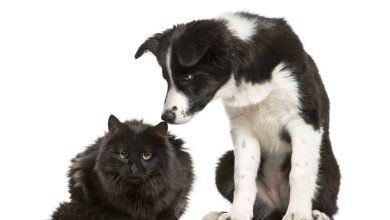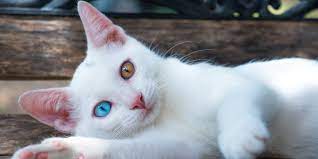Snow Cat Species: Majestic Predators of the Snow


Snow cats, also known as snow leopards, are magnificent creatures that inhabit the snowy mountain regions of Central Asia. These elusive predators have captivated the imagination of people around the world with their stunning beauty and incredible adaptations to their harsh environment. In this article, we will delve into the world of snow cats, exploring their physical characteristics, habitat, adaptations, diet, reproduction, conservation status, and their role in ecosystems. Let’s embark on a journey to discover the secrets of these remarkable creatures.
The Physical Characteristics of Snow Cats
Snow cats are medium-sized felines with a distinctive appearance. Their long, thick fur, which comes in shades of gray and white, helps them blend seamlessly into their snowy surroundings. Their bodies are muscular and compact, enabling them to navigate through rugged terrains with ease. One of their most striking features is their long, powerful tail, which helps them maintain balance while traversing steep slopes. With their well-adapted paws, snow cats can move silently across the snow, making them excellent hunters.
Habitat and Distribution
Snow cats inhabit high-altitude regions, primarily in the mountain ranges of Central Asia. They are found in countries such as Afghanistan, Bhutan, China, India, Kazakhstan, Mongolia, Nepal, Pakistan, Russia, and Tajikistan. These elusive creatures prefer rocky and rugged landscapes, where they can find ample prey and suitable den sites. Their habitat ranges from alpine meadows to barren cliffs, with altitudes reaching up to 5,500 meters (18,000 feet) above sea level.
Snow Cats’ Adaptations to the Cold Environment
Living in extreme cold requires special adaptations, and snow cats are marvels of evolution. Their thick fur not only provides insulation but also acts as effective camouflage. The pattern of their spots and rosettes helps break up their outline, making them difficult to spot amidst the rocky terrain. Additionally, snow cats have a well-developed nasal cavity that warms the cold air they breathe, preventing rapid heat loss.
Reproduction and Life Cycle
Snow cats have a relatively low reproductive rate. Females typically give birth to a litter of two to three cubs after a gestation period of around 90 to 100 days. The cubs are born blind and helpless, relying on their mother for nourishment and protection. As they grow, the cubs start exploring their surroundings and gradually learn essential hunting skills from their mother. Around the age of two, they become independent and venture out to establish their own territories.
Threats and Conservation Status
Despite their adaptability and resilience, snow cats face numerous threats that have led to a decline in their population. Habitat loss, primarily due to human activities such as mining, grazing, and infrastructure development, poses a significant threat to their survival. Illegal hunting, driven by the demand for their fur and body parts, further exacerbates the problem.
As a result, snow cats are listed as “Endangered” on the International Union for Conservation of Nature (IUCN) Red List. Conservation efforts are underway to protect these magnificent creatures and their habitats. Various organizations and governments collaborate to establish protected areas, promote sustainable development practices, and combat illegal wildlife trade. Additionally, raising awareness about the importance of snow cat conservation plays a crucial role in ensuring their long-term survival.
The Role of Snow Cats in Ecosystems
Snow cats play a vital role in maintaining the balance of their ecosystems. As top predators, they regulate the population of their prey species, which helps prevent overgrazing and maintains the health of the vegetation. Their presence also indirectly benefits other species, as their territories often overlap with those of other endangered animals such as the snow leopard and lynx. By protecting snow cats, we can safeguard the biodiversity of these fragile mountain ecosystems.
See also: how to stop fear aggression in puppies
Snow Cats in Popular Culture
Snow cats have captured the imagination of people across the globe, and they hold a significant place in various cultures and traditions. In many Central Asian countries, snow cats are revered as symbols of power, grace, and resilience. They feature prominently in folklore, art, and literature, serving as icons of the majestic beauty of the snow-covered mountains.
In recent years, snow cats have gained attention in popular culture, with documentaries, books, and movies shedding light on their lives and conservation challenges. Their elusive nature and stunning beauty continue to inspire awe and admiration in people worldwide.
Conclusion
Snow cats, with their majestic presence and remarkable adaptations, are a true marvel of nature. Their ability to thrive in extreme cold and rugged landscapes showcases the resilience and diversity of life on our planet. However, these incredible creatures face numerous threats, making their conservation a matter of utmost importance. By understanding and appreciating the unique characteristics of snow cats, we can work together to protect them and ensure their place in the world for generations to come.
FAQs about Snow Cat Species
How many species of snow cats are there?
There is one main species of snow cat, scientifically known as Panthera uncia, commonly referred to as the snow leopard.
Are snow cats endangered?
Yes, snow cats are considered an endangered species. They face various threats, including habitat loss and illegal hunting, which have contributed to a decline in their population.
Can snow cats survive in warmer climates?
Snow cats are highly adapted to cold environments and have specialized features that enable them to thrive in snowy mountainous regions. They are not well-suited to survive in significantly warmer climates.
Do snow cats live in groups?
Snow cats are generally solitary animals. They establish and defend their territories, which can vary in size depending on the availability of prey.
What is the average lifespan of a snow cat?
In the wild, snow cats have an average lifespan of around 10 to 12 years. In captivity, they can live up to 20 years or more with proper care and conservation efforts.





